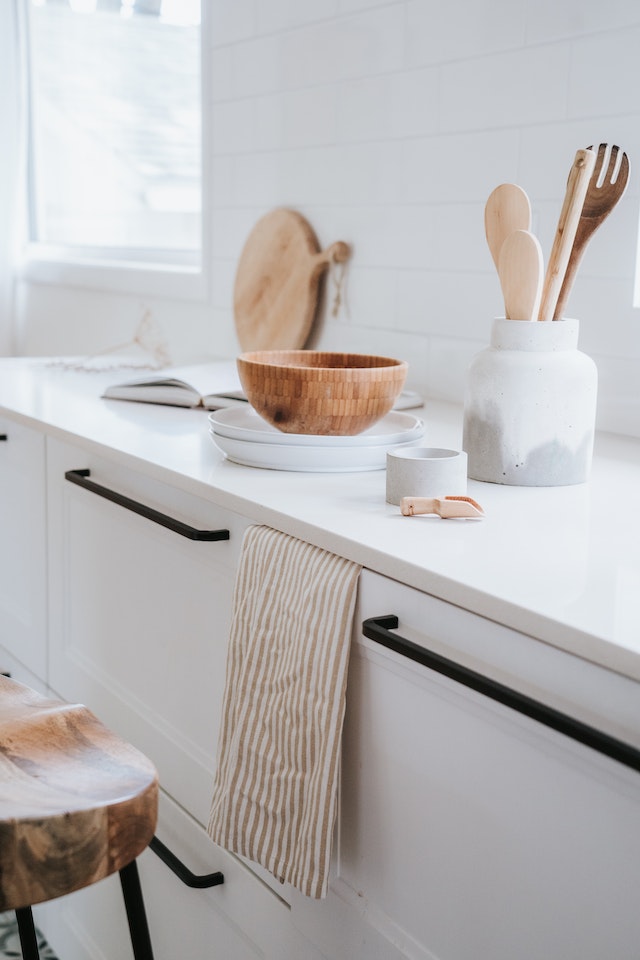
Damp and mould can cause real health problems for those who are exposed to it on a regular basis. Skin issues, symptoms like conjunctivitis, respiratory problems, and even more dangerous risks for those with compromised immune systems, the elderly or infants shows that this isn’t a problem to be taken lightly.
However, depending on where you live, and certainly in countries like the United Kingdom, the fight against damp and mold in each household is very much ongoing. Luckily, while moisture loves nothing more than to settle into a place where it cannot escape, there are some techniques and best practices you can use to avoid this from becoming a reality.
Even after doing everything right, it’s still wise to inspect your walls (especially in those hard-to-reach areas and wet places like a kitchen, bathroom or ensuite), so that you can detect damp or mould before it makes itself known.
In this post, we’ll discuss how to do that and more, and what preventative measures we can put in place ahead of time:
Implement Appropriate Airflow
It’s important for a house to get fresh air so that it doesn’t feel stale, stagnant and oppressive. Airflow can also help prevent mould and mildew as the moisture can freely travel, ideally to an exit vent or extractor (or just an open window, which is more than suitable).
This is why it’s sometimes good to have fans on even in the winter, especially if it’s a humid day. It’s good to get in the habit of keeping certain windows open, which can keep the air constantly moving through with care. For instance, you might decide to implement ventilation locks so at night it’s easy to sleep in a ventilated space. Just remember that if you keep windows locked for too long, this can prevent moisture escape, and that’s a problem.
Install Better Ventilation
It’s good to implement ventilation and air conditioning systems that help you achieve the prior goal of airflow, while also ensuring that air flows into the right places. With apartment air conditioning, especially as temperatures grow in houses that aren’t well-designed for it (British homes often suffer for this, as we saw during 40c+ temperatures last year, this is going to become even more commonplace and necessary.
Of course, it’s not just about trying to let the air escape, but also making a comfortable environment for everyone in the living space. This is where a good air conditioning approach can be a vital strategy to work with.
Moderate The Temperature
Many people think that heating the home up during a cold period can prevent damp by preventing moisture-filled air from sticking to cold walls. This isn’t really true for the most part, and it’s not a reason to spend your hard-earned money on heating if you weren’t already going to.
Moreover, sometimes it’s good to make sure a heated room has at least a little ventilation (after you’ve enjoyed the warmth) so that the heated air can escape more readily, especially during wet periods outside. This can allow you to ensure dampness and moisture has no ability to stick around, which really will make a difference in preventing damp.
It’s wise to consider how a room can be heated through more conventional means, also. For example, if you have a small bedroom that you and your partner sleep in each night with the windows fully shut, you should remember that the body heat you generate can bring its own stagnant air and warmth into the room, which is why ensuring safe ventilation (such as through capable window ventilation locks) are implemented correctly.
Extract Wet Air
It’s good to extract wet air from the property if you can. Of course, this means using extraction fans in your kitchens and bathrooms. The former may be necessary even if you’re attending to quite light cooking, such as boiling eggs for your morning toast, as the steam can rise and may not have a place to escape otherwise.
Bathrooms, too, are rooms where long hot showers and baths can lead to warm air that can’t escape otherwise. In many countries, an extraction fan is actually a legal requirement necessary for properly evacuating the wet air from a property, as otherwise a property can become unlivable thanks to mould. Make sure to implement a good extraction system in your renovations or upgrades, especially if buying a larger oven unit or implementing new bathroom features.
Use Mould & Mildew Removers
Sometimes, you can do everything right and moisture may remain. Perhaps you heat the home and forget to ventilate properly in the evening. Maybe you cook without the extraction fan a few times, and forget the impact it might have.
Luckily, cheap mould and mildew sprays can be used to help cut down on growths and nullify that bacteria, but of course, this is a quick resolution and may not resolve damp growing underneath the walls or in hard-to-reach areas. It is a method you can use, though.
Dehumidify Where Appropriate
Dehumidifiers can be tremendously helpful for those that live in wet climates or experience cold, wet winters. Running a dehumidifier can be as expensive as running a fan or air purifier on for a few hours, but can help you resolve damp issues, especially in rooms known for having them.
They’re not usually recommended for kitchens or bathrooms because extraction fans and ventilators should be doing most of the work there, but in bedrooms or living spaces suffering from damp they’re ideal.
Check For Leaks
Sometimes, a wet patch is not damp. It may refer to a leak from the outside of the home that needs to be attended to ASAP. So, always double-check, particularly if the damp paintwork seems to only occur in spots, or if it accrues without your noticing rather quickly.
With this advice, we hope you can more easily prevent damp in your home. This way, you can avoid the health issues that may otherwise come from mould exposure.
Featured post
© Copyright 2023 Antonia, All rights Reserved. Written For: Tidylife


Leave a Reply